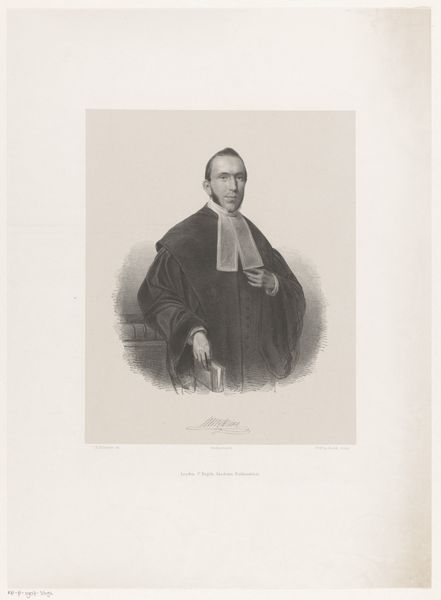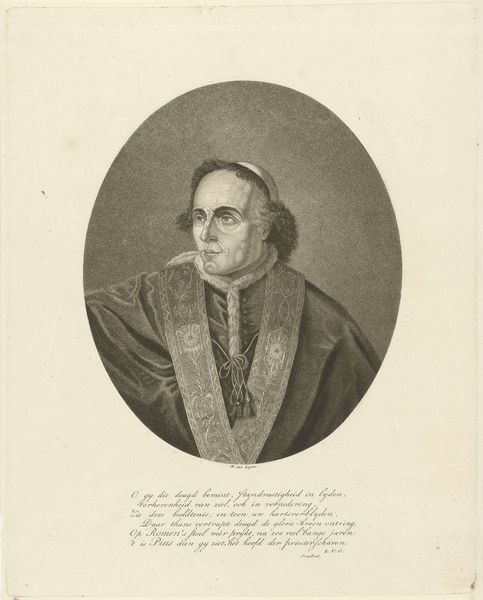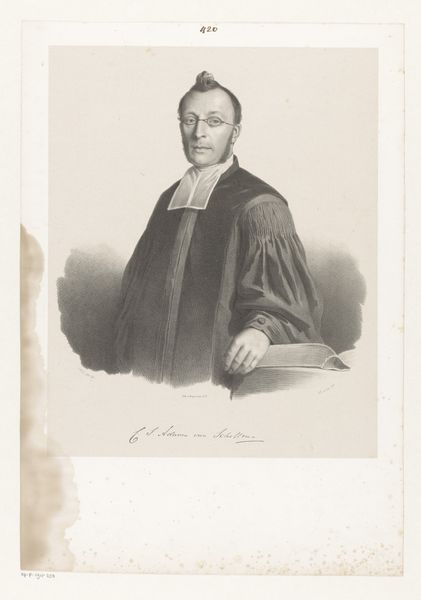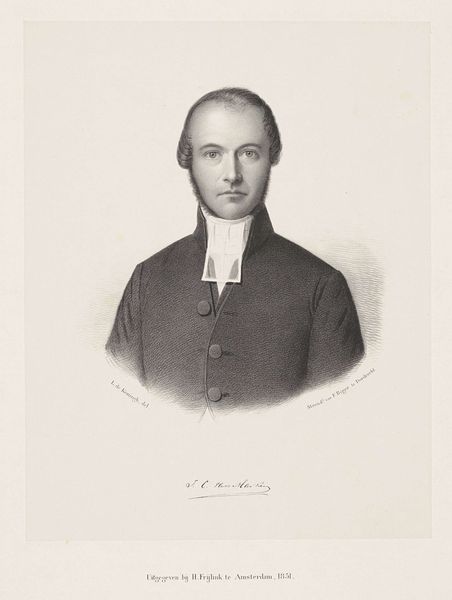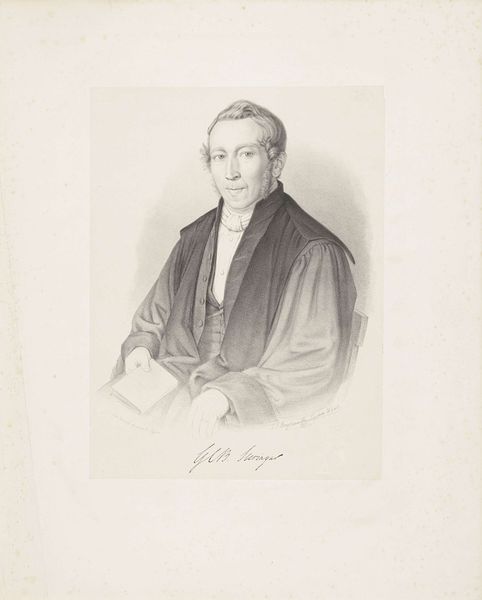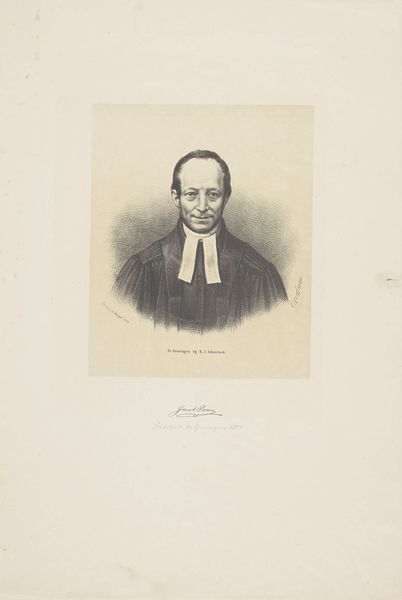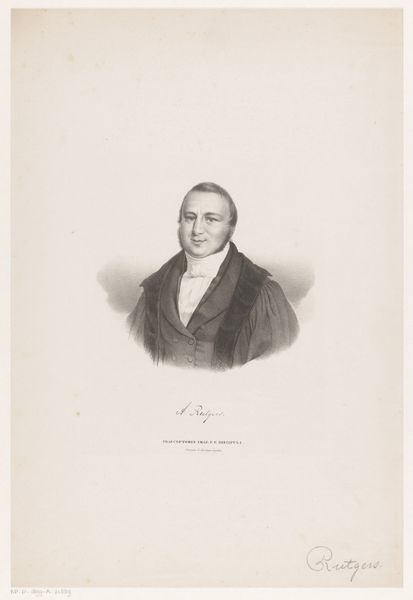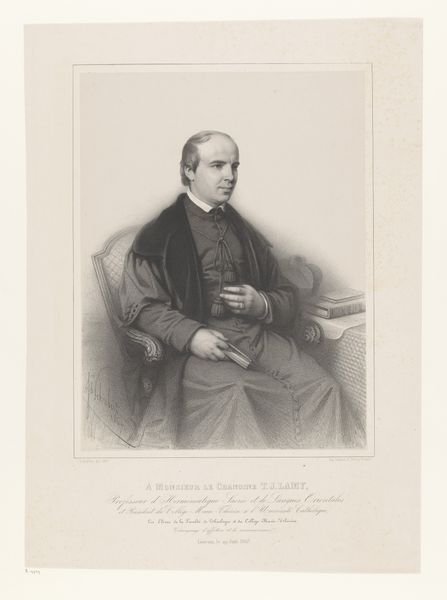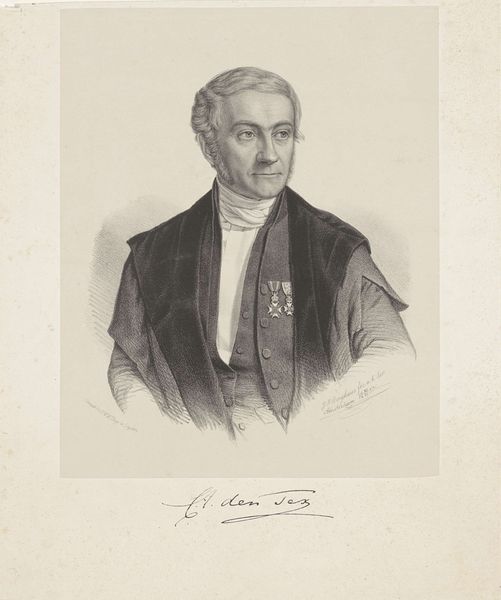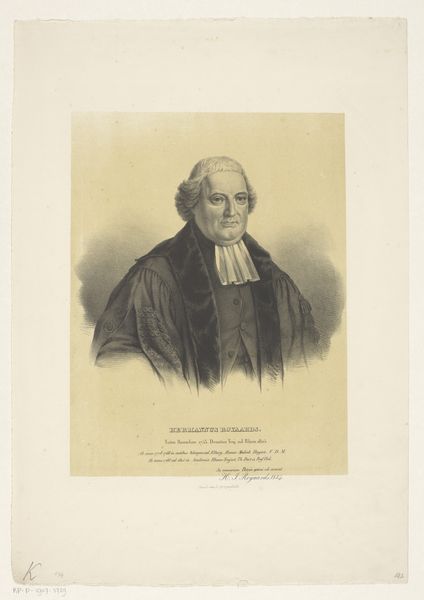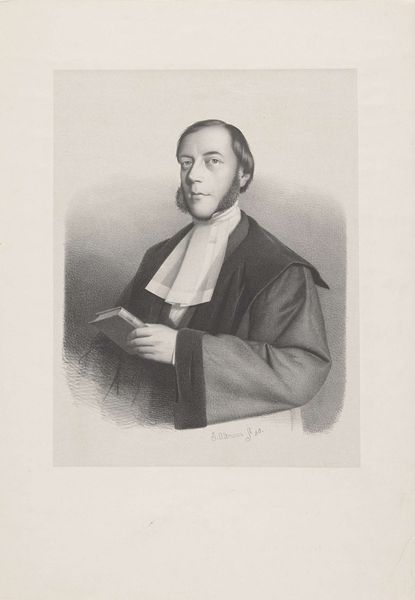
drawing, graphite
#
portrait
#
pencil drawn
#
drawing
#
light pencil work
#
16_19th-century
#
historical photography
#
pencil drawing
#
graphite
#
portrait drawing
#
academic-art
#
graphite
Dimensions: height 500 mm, width 355 mm
Copyright: Rijks Museum: Open Domain
Curator: Before us is "Portret van Pieter Leonard Rijke," a graphite drawing possibly created between 1850 and 1858 by Johann Peter Berghaus. Editor: It has a serious, almost academic air about it. The sitter seems quite contained. Curator: Berghaus's choice of graphite lends a delicate, almost photographic quality to the portrait, reflecting the burgeoning influence of photography during this period. But let's consider Rijke himself. He wasn’t merely a man, but an identity constructed and performed within specific societal expectations. Editor: Exactly. Look at the texture Berghaus achieves with graphite; it gives weight and volume to Rijke's robes. It’s not just a portrait; it’s a document of labor and skill, a trace of the hand of the artist and the availability of specific materials like high-quality graphite during this era. Curator: Indeed. Rijke was a man of science, professor of experimental physics at Leiden. How much does that identity intertwine with broader structures of power and knowledge in the Netherlands at that time? This portrait, with its restrained formality, situates him within the intellectual elite. Editor: But is the graphite simply a means to an end, merely representational? Or does it act as a silent conveyor of societal status, reflective of specialized labor? Was Berghaus self-conscious in using this medium? Curator: I agree that the work and skill needed to create a detailed work like this deserves recognition. But beyond that it serves to perpetuate systems. Even in its seeming neutrality, the drawing becomes an artifact deeply embedded in these structures. What do you think is Berghaus's purpose here? Editor: It feels like an attempt to give lasting substance through artistic intervention, to take Rijke's scientific knowledge and recast it into a sort of public statement through graphic form, highlighting at once artistic skill and learned knowledge, or even class. Curator: I'm left pondering on how art preserves individuals while perhaps solidifying societal hierarchies, all thanks to something like a simple graphite pencil. Editor: Yes, tracing a moment, revealing layers of materiality and societal expression through the graphite dust of history.
Comments
No comments
Be the first to comment and join the conversation on the ultimate creative platform.

